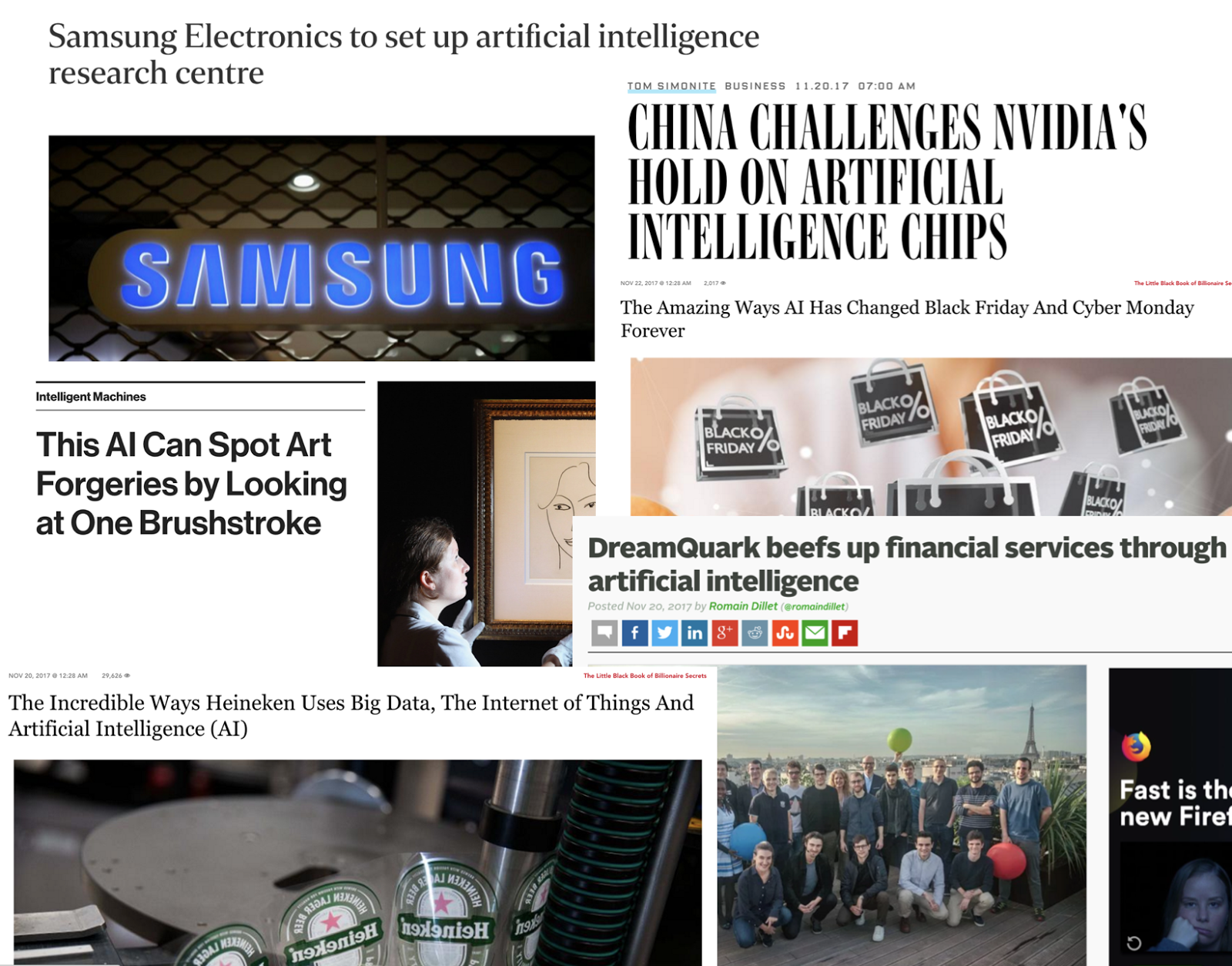Learning to craft AI-centric stories
By Lily Gordon
According to Inc., the top five industries that artificial intelligence will disrupt by 2027 are healthcare, marketing, lifestyle, transportation and finance. Those are all fields that employ a large number of public relations practitioners and, in turn, will need those PR professionals to understand how to communicate new AI-focused stories.
So, how can communicators begin to wrap their minds around AI? How can we begin to look at organizational stories with an AI lens? And then maybe from a basic level, what about AI actually matters in the bigger picture?
According to Inc., the top five industries that artificial intelligence will disrupt by 2027 are healthcare, marketing, lifestyle, transportation and finance. Those are all fields that employ a large number of public relations practitioners and, in turn, will need those PR professionals to understand how to communicate new AI-focused stories.
So, how can communicators begin to wrap their minds around AI? How can we begin to look at organizational stories with an AI lens? And then maybe from a basic level, what about AI actually matters in the bigger picture?
 |
| Above is a sampling of top tier media placements featuring AI-centric stories. |
Start with the basics
In order to craft a compelling AI-focused story for an organization, communicators need to understand that AI is more than Siri reporting the weather or Alexa playing a favorite Spotify playlist. AI is literally computers learning how to think like humans. Computers can take an experience and store it away for later use. Think of it like a kid touching a hot stove, feeling pain and then remembering that pain. The kid won't purposefully touch a hot stove again because of that learned experience.
 |
| Photo source Diamond Inc. |
Within the general AI bubble, there are three more specific layers. Machine Learning (ML) is the initial learning part of the AI world. Because of ML, a self-driving car can learn that driving through a red light may put the car and its passengers in danger, which means it will avoid it in the future.
Inside the ML circle is Deep Learning (DL), which also involves supervised and unsupervised computer learning. What is special about DL is that it also involves the ability to understand large amounts of data efficiently, speeding up image and speech recognition. Tools such as Google Translate rely on DL to understand a saying and compute it into another language.
Finally, the innermost piece to the AI puzzle are Artificial Neural Networks (ANNs). This layer reflects the human mind, creating many neural connections within the computer itself. All of those buzzing neurons can complete multiple tasks at once, which makes ANNs particularly exciting as they are speeding up research capabilities drastically. It's pretty wild stuff when you think about it.
Highlight the tangible, non-threatening benefits
Researchers around the world have proven that human decision-making is greatly influenced by emotions. If someone is afraid of their job being automated because of this new "artificial intelligence" thing, they may refuse to support a company publicly riding the AI wave, regardless of what that actually means. Realistically, the consumer experience as AI improves will have to do with faster, more accurate computer search engines, more accurate photo recognition and an overall better mobile experience. To the average person, these types of stories are more compelling and less threatening than sweeping AI stories.
 |
| An example of a relatable AI capability highlighted in a TechCrunch story. |
Humanize AI with thought leaders
Top concerns surrounding the rise of AI are automation, which many see as the loss of human jobs, and privacy. As mentioned in an earlier blog post, many are also afraid of AI because of its creepy depictions in pop culture, such as 2001: A Space Odyssey. The best way to humanize a subject is to (surprise!) bring some humans who understand the topic into the picture.
 |
| An example of Andrew Ng, a prominent thought leader in the AI world, addressing common concerns in publication Gadgets 360.
By possessing a basic understanding of AI, identifying the aspects of it that appeal to stakeholders and encouraging company thought leaders to address common concerns on the topic, PR practitioners can jump into the AI pool head first.
|

